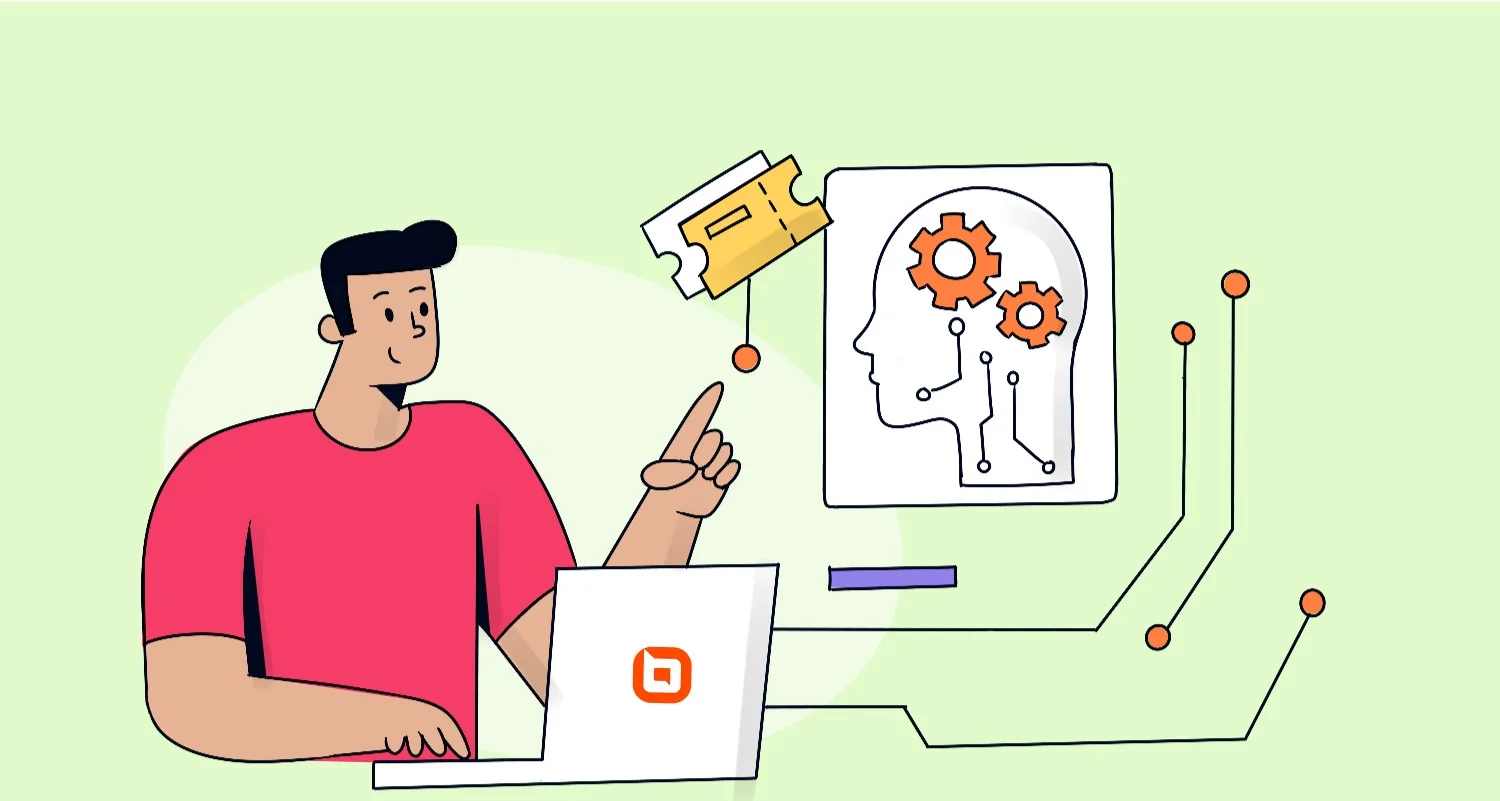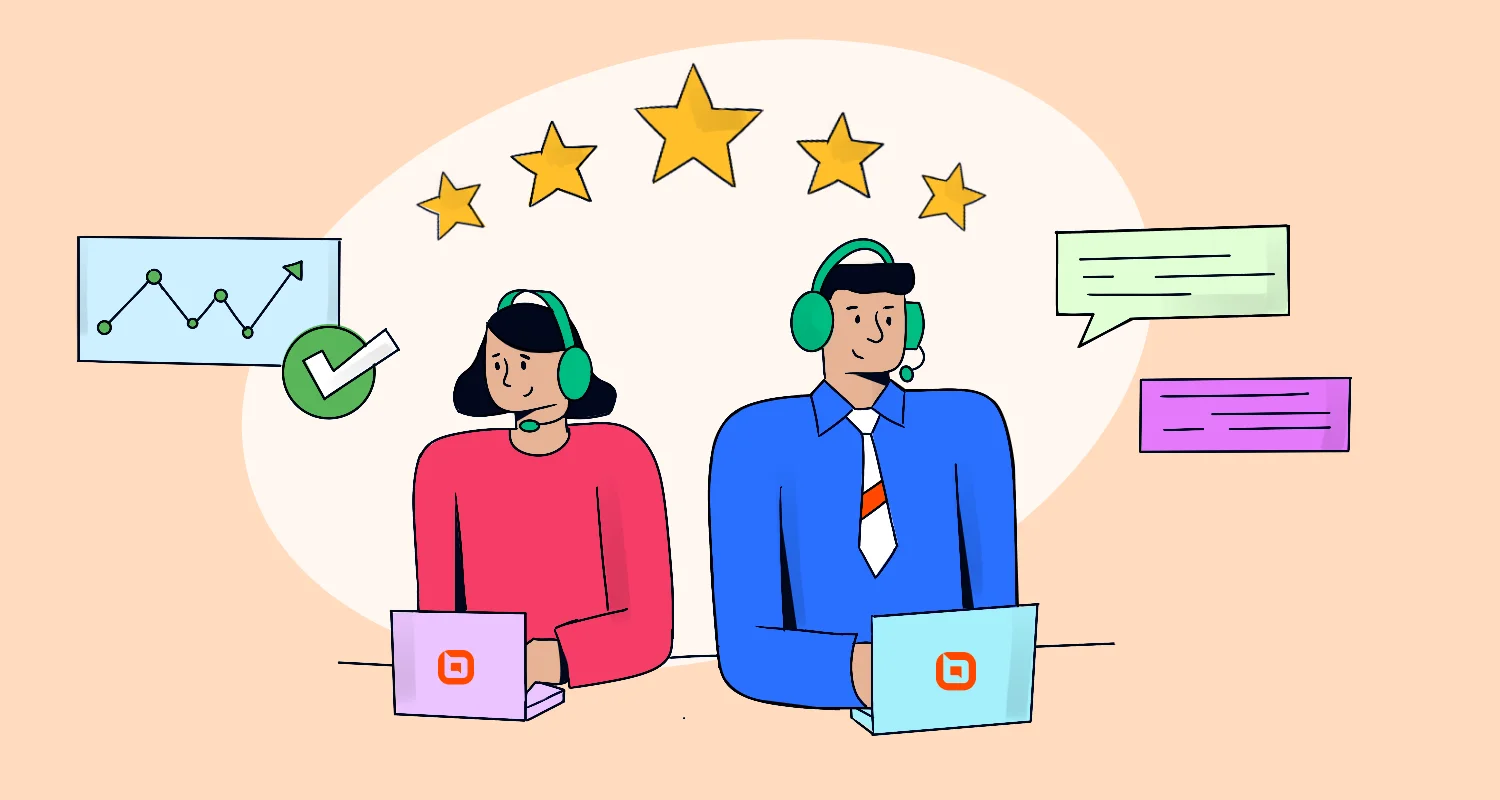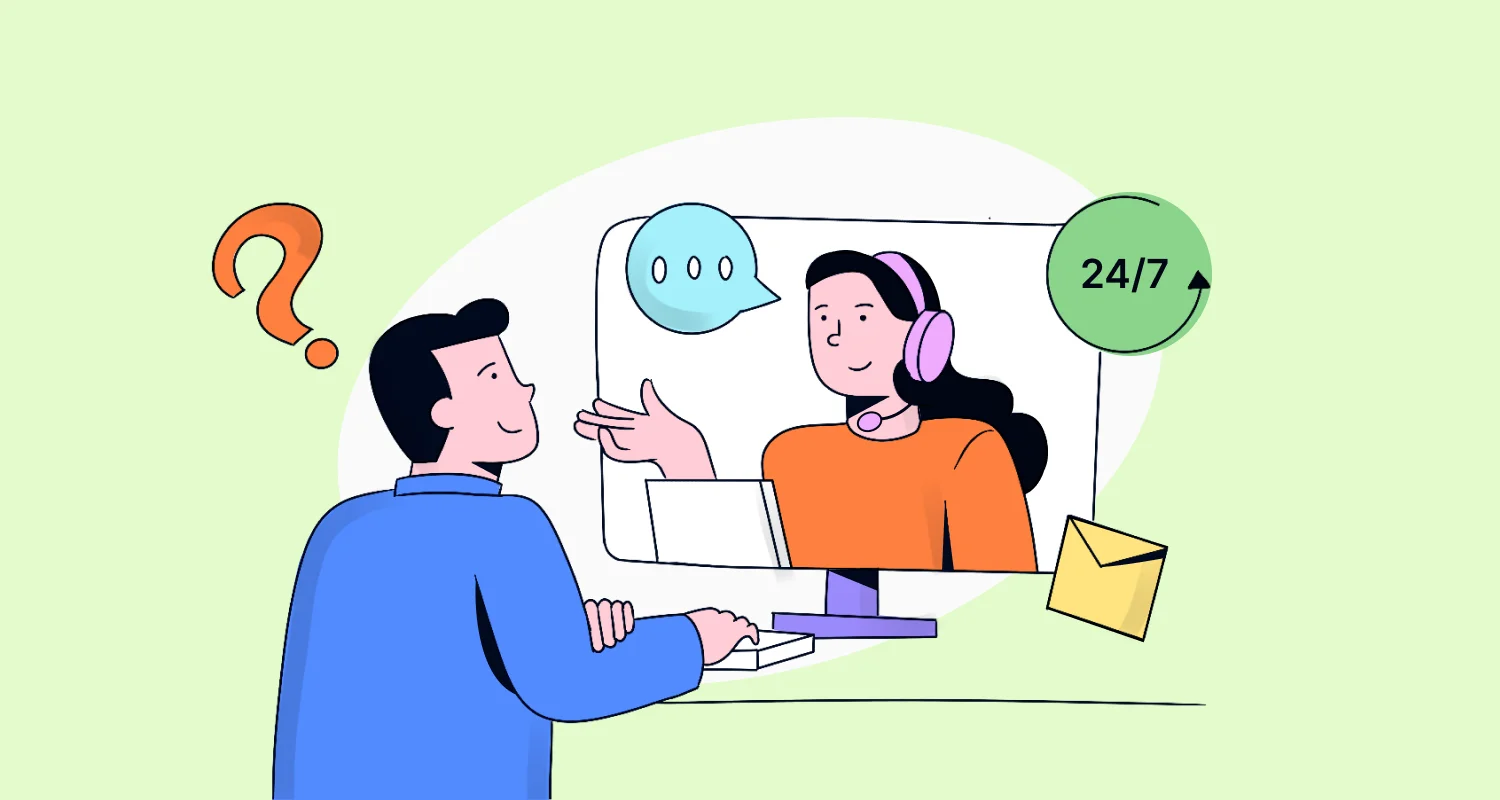In business operations today, acquiring new customers is often more expensive than retaining existing ones.
When you provide your customers with high-quality products or services, you can earn their trust and build long-lasting relationships with them.
This, in turn, can increase the overall customer lifetime value.
In this blog, we will explore customer lifetime value in detail, its significance to the customer experience (CX), and how to use it to increase brand loyalty.
What is customer lifetime value?
Customer lifetime value (CLV) is a metric that businesses use to estimate the total revenue a customer will generate throughout their entire relationship with the company.
This metric helps asses the customer’s value over time rather than just focusing on the value of a single purchase.
Calculating customer lifetime value can be complicated, involving several factors, such as products, costs, purchase frequency, and volume.
However, it can be simplified with the right tools, and strategies can be developed to increase it.
How to calculate customer lifetime value
Before you calculate customer lifetime value, you need to determine the following values.
- The average customer value
- The average annual number of purchases
- The average retention time
Multiply the three values to find the overall lifetime value. On the other hand, estimating a customer’s expenditure over time could not provide a precise picture.
Since many consumers do not find businesses independently, customer lifetime value estimates should account for market research and client acquisition, engagement, and retention costs.
Customer value
This is the average amount of money a customer spends with your business in a given period.
The formula to find customer value is:

The average value of sales = Total sales/The number of days
The Average value of transactions = Sales/Transactions
Average customer lifespan
This is the average length of time a customer continues to do business with your company.


By multiplying these two factors together, you get an estimate of the total revenue a customer can be expected to generate.
Customer lifetime value examples
To calculate CLV, let’s use a potential SaaS business as an example. We’ll show you how to apply the formula and use CLV to target top customers.
The pricing structure for subscription-based services is $10, $20, and $30 per month, with an average purchase value as 18.
- The SaaS company targets middle-aged adults, specifically married individuals aged 35-55, who stay customers for an average of two years and spend an average of $20 per purchase. This is how you calculate the customer profile.
The customer lifetime value will be calculated as follows:
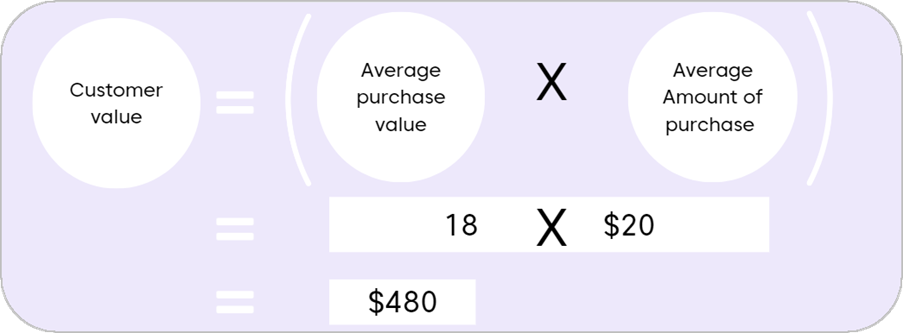
Now let’s calculate the CLV in example 1
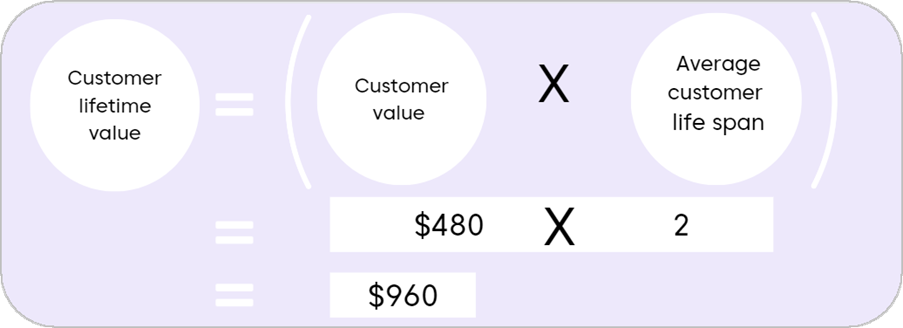
2. The SaaS company is targeting another young adult customer profile aged 18-30, who typically stay customers for 1.5 years and have an average purchase amount of $30.
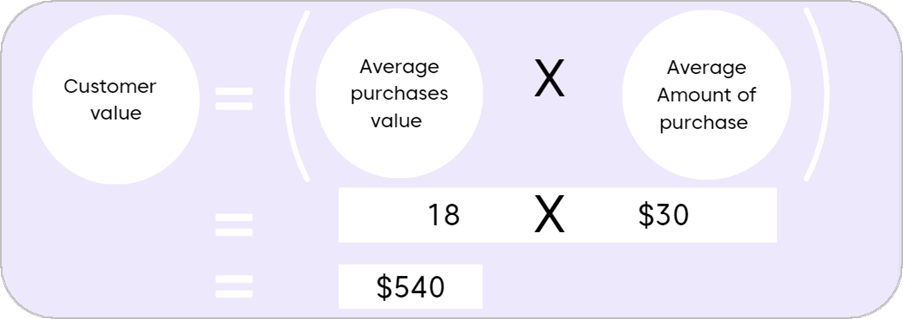
Now let’s calculate CLV in example 2
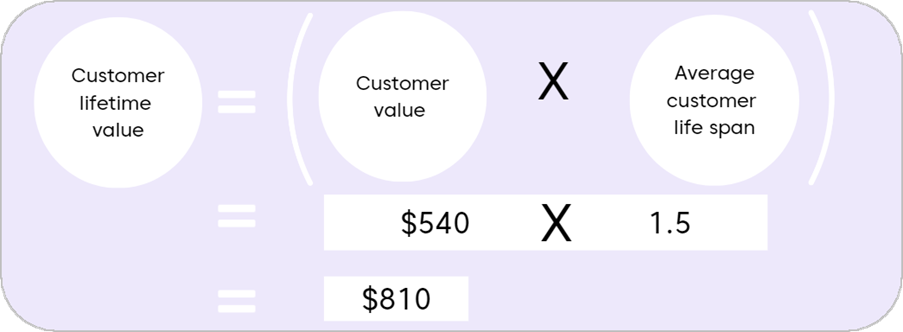
In conclusion, the middle-aged customer profile has a higher CLV of $960 compared to $810 for younger individuals, indicating that the SaaS business should target this group (the first customer profile).
How to increase customer lifetime value
Your organization can increase its revenue by prioritizing CLV and identifying more chances to offer your clients additional value. Here are some strategies to consider.
Put the needs of the consumer first
Rather than concentrating on goods or profits, a customer-first attitude places the customer’s needs at the heart of business decision-making.
Businesses that use a customer-first strategy can consistently provide excellent support at each stage of the customer journey.
This can be achieved by:
- Consistently delivering value
- Providing personalized experiences tailored to customer preferences
- Increasing customer satisfaction
Additionally, prioritizing customer needs builds positive word-of-mouth recommendations and referrals, attracting new customers who are likely to show similar loyalty traits, further enhancing the overall customer lifetime value.
Enhance your customer onboarding process
When you have the right customer onboarding processes, you can establish a strong relationship and trust.
Providing personalized welcome emails, how-to videos, and ongoing support can educate customers on the value of a product and how to utilize it to its full potential.
This investment in onboarding keeps customers engaged and happy, and more likely to become loyal, long-term customers who will spend more with your business.
Pay attention to your customers
You’re aware of what your customers say about your brand if you’re proactive and use customer service analytics to track and understand your audience.
Are they satisfied with your products or services? Dissatisfied customers tend to voice their complaints, particularly in product evaluations and social media remarks.
Show them you’re paying attention, understand their concerns, and are working to find solutions.
Gathering direct customer feedback through surveys can assist you in converting customer complaints into opportunities for improving customer service.
Elevate the value of your average order
One effective strategy to increase your customer lifetime value is to raise your average order value.
When customers are nearing the completion of their purchases, you have the opportunity to suggest additional products that complement the ones they are already purchasing.
By recommending complementary items, you can help boost the overall value of their order and increase the likelihood that they’ll return to make future purchases.
Create a loyalty program
Creating a customer loyalty program incentivizes repeat purchases and builds a stronger emotional connection between the brand and the customer.
Offering rewards, gifts, and exclusive benefits encourages customers to remain loyal, leading to increased retention rates and higher overall spending over the customer’s lifetime.
Additionally, loyal customers are more likely to advocate for the brand, attracting new customers through word-of-mouth referrals and further amplifying the impact on customer lifetime value.
Businesses should offer incentives to effectively turn high-value customers into brand advocates.
A formal referral program can reward customers for bringing in new business, and incentives may include discounts, early access to services, or upgrades.
Reach clients with a smooth omnichannel strategy
Rather than making assumptions about the channels your particular client group prefers, research to find out.
Customers become used to utilizing services and goods across multiple platforms and devices without giving channel challenges a second thought.
They anticipate that businesses will be reachable across all channels and provide support at all times. Businesses can connect with them on several customer communication channels such as live chat, community forums, websites, mobile apps, email, or social media.
Prevent customer churn through utilizing a seamless omnichannel inbox that allows customers to communicate across preferred channels and agents to manage their conversations in a unified platform.
Invest in customer experience
Customers are often dissatisfied when their issues are not resolved on time. Consider investing in customer experience tools like customer portal software that allows customers to track and submit tickets through a user-friendly interface easily.
An outstanding customer service experience not only pleases your customers but also encourages them to stay loyal to your brand.
Build strong long-lasting relationships with customers. Establishing trust is essential for building long-term customer relationships since it requires dedication to continuous engagement and communication.
Customers will return if they perceive your company as offering the best prices for the products and services they desire.
However, in today’s digital age, customers seek more than just transactional interactions. They desire a personal connection that goes beyond business objectives and fosters a sense of value and importance.
This can be achieved by:
- Staying in touch with customers through personalized content
- Asking for customer feedback for improvement
- Reaching out to inactive customers
- Utilizing customer data platforms
By consistently following these steps, you can deliver exactly what your customers need, thus increasing their customer value.
Why is customer lifetime value important?
We calculated the average lifetime value of a client for a SaaS company in the previous example. But why is customer lifetime value important to businesses?
Here are a few of the main reasons for tracking customer lifetime value.
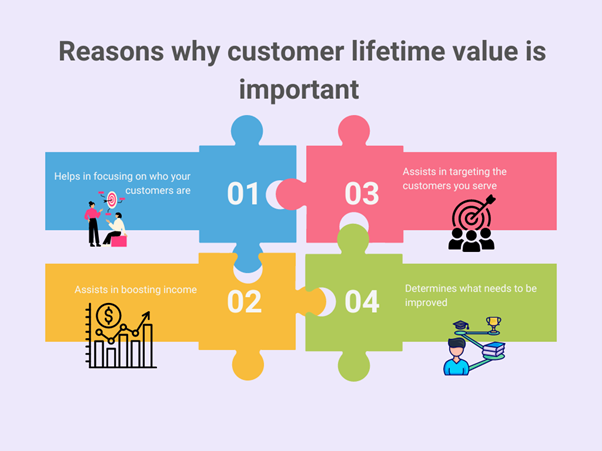
Helps in focusing on who your customers are
Companies may create advertisements targeting high-value clients by categorizing them based on their expected value, behavior, and interests.
This focused strategy ensures the efficient use of outreach funds, which allows businesses to invest more to attract clients with better lifetime values.
As a result, marketing campaigns are more successful, customers are happier, and long-term profitability rises.
Assists in boosting income
More consumer spending at your business leads to higher income. Through upselling and cross-selling, companies may use customer data to design product offers for their target market and boost customer lifetime value.
When carried out successfully, this boosts your company’s earnings.
Assists in targeting the customers you serve
Companies may enhance their outreach initiatives by grouping customers according to their expected value, behavior, and sentiments using customer lifetime value.
By using a customer focused strategy, marketing money may be allocated more efficiently and businesses can focus more on gaining high-value clients.
Long-term profitability rises, customer happiness rises, and marketing initiatives become more successful.
Determines what needs to be improved
By examining customer lifetime value and associated indicators like average order value, frequency of purchases, customer turnover rate, and total revenue, businesses may get important insights into client relationships.
Organizations can use this data to pinpoint areas for development and possible roadblocks in their day-to-day operations.
A decline in customer lifetime value (CLV) often indicates issues with the message, customer experience, or product quality.
Boost Customer Lifetime Value with Comprehensive CX Collaboration
Companies that determine and study their customer lifetime value have an advantage in forecasting revenue growth and determining the most effective strategies for allocating marketing funds.
BoldDesk is dedicated to helping other businesses generate leads and in supporting them at every turn to convert customers into devoted clients with high customer lifetime values.
We use data-driven strategies, real-time information, and omnichannel support to satisfy your customers and build lasting connections with them.
Contact us to arrange a live demo and experience how BoldDesk features can increase customer lifetime value. Or sign up for our free trial for immediate access.
I hope you found the article useful. Do you have any more ideas or recommendations? Kindly leave your comments in the section below.
Related articles



 Email Ticketing System
Email Ticketing System
